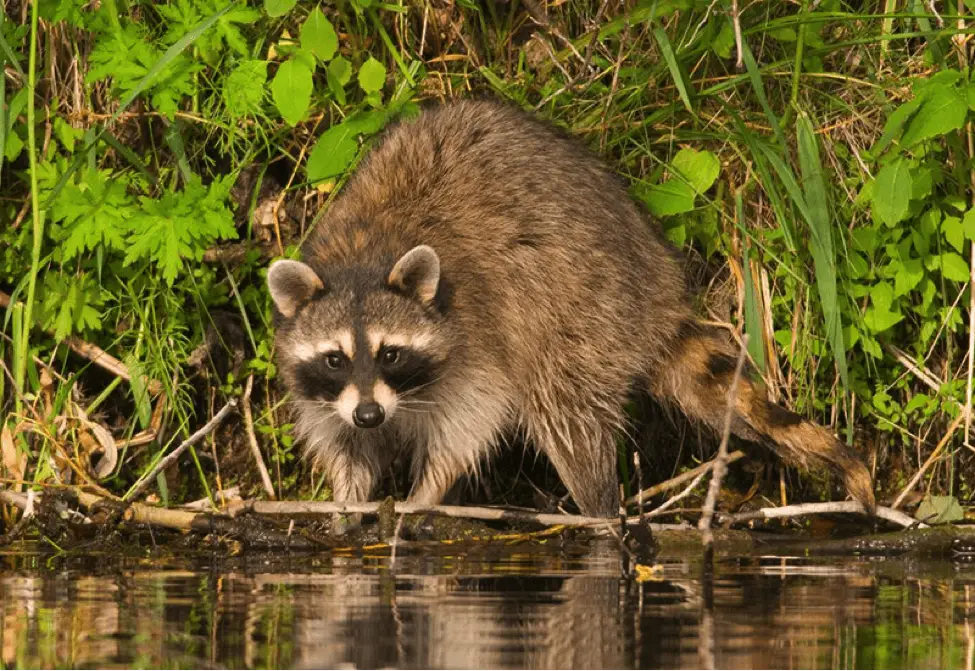
Raccoons are common all over the United States. Although they have an adorable face and are fun to watch at times, they will cause havoc in your shed or attic and knock your garbage can on its side. They’ll even steal your bird seed and dog food, and because of rabies can pose a safety risk to your family and pets. If thieving trash pandas are giving you a hard time, you’ll be glad to know one of the best ways to get rid of them is through trapping. Here are some tips to help you through it.
Choose the Right Trap
Many people get upset when they fail at raccoon trapping, but don’t realize the problem is that the cage they choose was too small or not designed to catch the little bandits. To give yourself a fighting chance, you need a sturdy, metal cage that is big enough to hold a raccoon. The most common metal cage used for trapping is at least 32” long and 12” x 10” wide and tall.
Place Trap Strategically

If you want to catch a raccoon in a trap, you have to place the cage in a strategic location. The crafty nocturnal creatures are very clever, which means you have to be too, if you want to trap them.
To do this, you’ll need to put a trap in an area that you know raccoons are visiting. However, you can’t just drop a cage and think you’re going to get a mammal in it. Instead, you have to place the trap in an area without making it look suspicious. For best results, place the cage in a frequently populated area, but place it a few feet away from where you’ve actually seen the raccoons. Usually just a few feet off the beaten path should do the trick.
It’s worth mentioning you shouldn’t put the cage near anything you don’t want a raccoon to destroy. You also need to make sure the cage is in a shaded area, so it won’t be roasting in the sun.
Prepare the Area Around the Cage
After you’ve decided where you’re going to put the raccoon trap, it’s time to prepare the area around the cage. Remember earlier when we said you can’t just drop a trap in the woods and hope for the best. Well this has to do with the intelligence of raccoons. So after you’ve chosen the right location, you have to spend a few minutes preparing the area so it looks as it should and nothing sticks out.
When everything looks good move the cage to the side and dig a hole for the trap’s pan. Add a lure to the hole if you want to increase your chances of snagging a ‘coon. If you’re going to use a lure, there aren’t enough good things to be said about skunk essence. It works like a charm. If you don’t use a skunk lure think about adding white bread, sardines, or marshmallows. Raccoons love marshmallows.
After you’ve dug the hole and used a lure if you want, it’s time to set the cage back in place. Don’t cover the hole completely with dirt, or you’ll risk decreasing the effects of the lure. But do make sure to toss dirt all around the cage and use any brush nearby to cover the cage. Usually, it’s necessary to cover the back, top, and both sides of the cage with brush
Make sure you’re happy with the way the cage looks before you leave. Make any adjustments needed and then mark the area, so you don’t have to remember exactly where you left the cage. One good way to mark a trap is to tie tape around a tree or branch about 3’ feet away from the cage. Make sure to tie the tape off about 6’ high, so it’s at eye level when you’re walking towards it.
Conclusion
While raccoon trapping can be difficult, it is a great alternative to using weapons to kill the animals if they are being a nuisance or pose a health risk. But, if you do choose to trap raccoons, you must be aware of trapping laws in your state. Make sure you have a furtaker’s license, if needed, and check the traps every 24 hours.
Because trapping raccoons and other small animals takes patience and persistence, you might need to adjust your techniques to catch the mammal. Good Luck and Be Safe.
